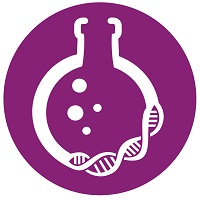Bioanalytics
Symposium: Oligo Bioanalysis, Platforms and Methods
Comparison of Two Hybridization LBA Platforms for Oligonucleotide Therapeutic Quantification
Wednesday, November 12, 2025
10:00 AM - 10:30 AM CT
Location: 221 AB

Liz Nolff, M.S. (she/her/hers)
Manager II
BioAgilytix
Durham, North Carolina
Speaker(s)
Oligonucleotides are a growing class of therapeutics used for the treatment of a variety of diseases. A unique aspect of these therapeutics is the variety of technology platforms that can be used to quantify these drugs whether by LC/MS, hybridization LBA, or qPCR. There are many factors that inform the choice of platform to measure oligonucleotides in matrix. Additionally, differences in these methodologies and variation in oligonucleotide compound composition lends to challenges in comparing these methodologies and understanding which platform to use to support studies.
In this presentation, we will highlight two hybridization LBA method formats for the quantification of three forms of oligonucleotide molecules: an antisense oligonucleotide (Fomivirsen), a GalNAc-conjugated siRNA (Lumasiran), and a phosphorodiamidate morpholino oligomer (Viltolarsen).
We will compare the hybridization ligation method with the sandwich hybridization method for quantification of the three oligonucleotide molecules in rat plasma. We will demonstrate comparison of both methods with important assay parameters such as sensitivity, precision, and accuracy. These results are part of an industry collaboration to compare oligonucleotide quantification methods across technologies. This information will allow researchers to understand the differences and ability to perform comparisons across these bioanalytical techniques that can be applied to their drug programs.
In this presentation, we will highlight two hybridization LBA method formats for the quantification of three forms of oligonucleotide molecules: an antisense oligonucleotide (Fomivirsen), a GalNAc-conjugated siRNA (Lumasiran), and a phosphorodiamidate morpholino oligomer (Viltolarsen).
We will compare the hybridization ligation method with the sandwich hybridization method for quantification of the three oligonucleotide molecules in rat plasma. We will demonstrate comparison of both methods with important assay parameters such as sensitivity, precision, and accuracy. These results are part of an industry collaboration to compare oligonucleotide quantification methods across technologies. This information will allow researchers to understand the differences and ability to perform comparisons across these bioanalytical techniques that can be applied to their drug programs.
Learning Objectives:
- Upon completion, participants will be able to gain insights into hybridization ELISA methods used for the quantification of 3 oligonucleotide molecules.
- Compare data from ligand binding assays to other platforms such as LC/MS and qPCR for quantitation of oligonucleotides.
- Upon completion, participants will be able to apply these concepts to their drug programs with these case study examples.

